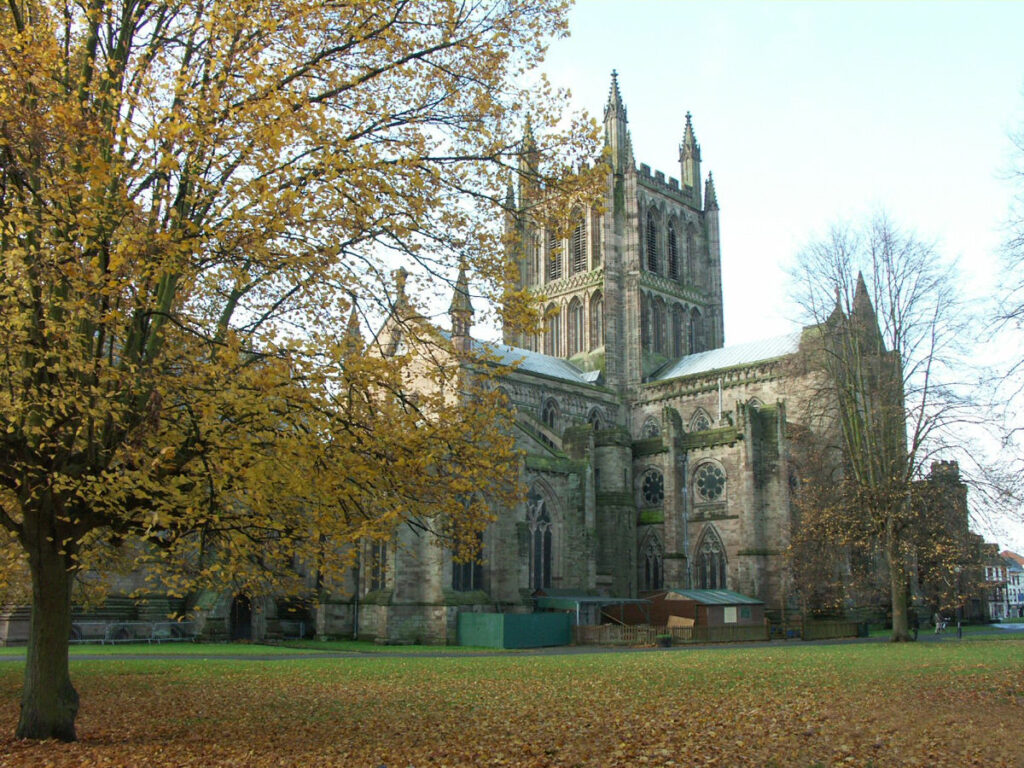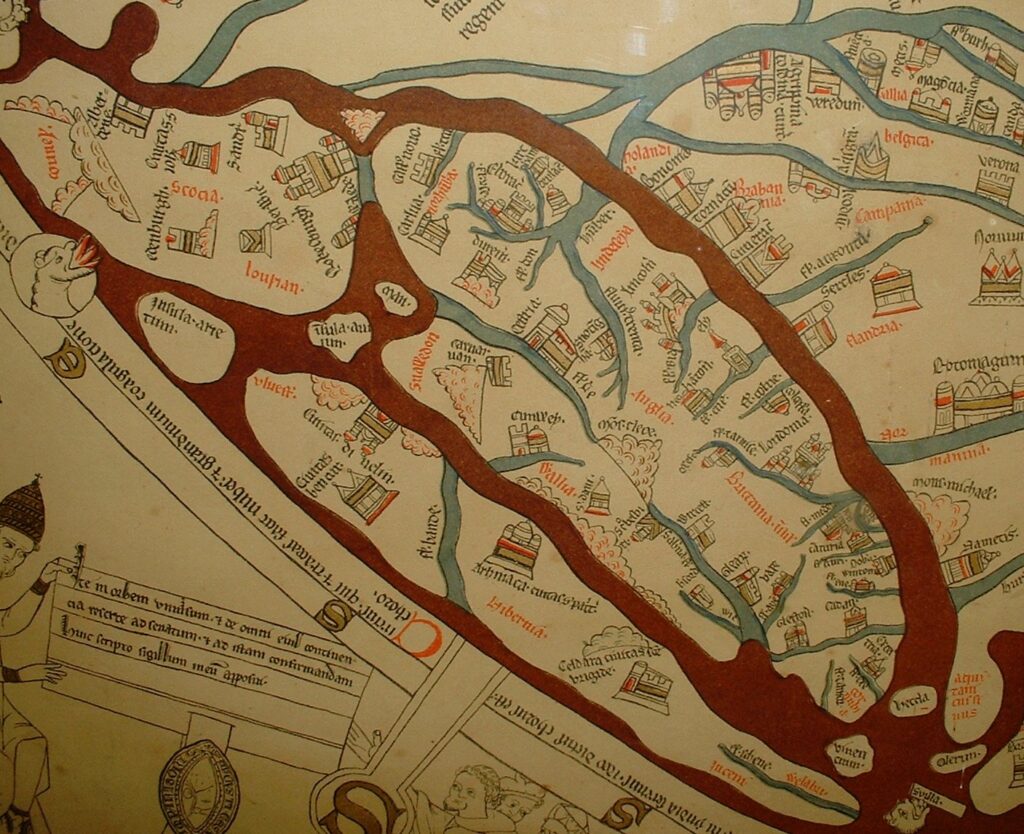Atlas of a Medieval Life explores the ways in which recently developed Digital Humanities (DH) computational methodologies and data-visualization platforms can bring the medieval subfields of literary studies, cartography, and biography into more fruitful dialogue.

The documentary research underlying the project centers on the career of Roger de Breynton (c.1290-1351), a historically obscure but widely-traveled and well-connected Canon of Hereford Cathedral, in provincial SW England. Breynton’s career itinerary (or collection of “roads taken”) is revealing for how it alternately conforms to and departs from the geographical experiences usually presumed to obtain for the period.
Working from documentary materials assembled over more than two decades, we are establishing a database of archival material relating to my protagonist’s career; and beginning to reconstruct Roger Breynton’s geographical movements and social/institutional networks, with the help of some digital computational and visualization platforms that have not often been brought to bear in a medieval studies context.
Medievalist biography has long been thought “impracticable,” even by medieval specialists themselves (“except for the odd king or saint”).

One reason for this is quantitative, the period’s comparative lack of documentary sources; and another is qualitative, the perception that there is an insurmountable lack in the sources, which by and large fail to deliver the degree of “interiority” and “personality” that traditional biography requires.
A medieval case study requires that biographical theory respond to challenges it would not otherwise encounter, were the field’s implicitly modernist orientation to remain undisturbed.
Medieval literary and cartographical texts offer renewable resources that can help animate those “colorless” husks we encounter in life-records from the period; but so too do emergent methodologies in Digital Humanities offer a new means by which to bring meaning to these bio-documentary materials.
